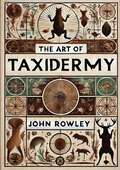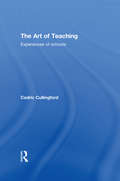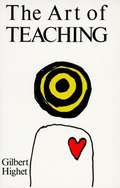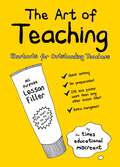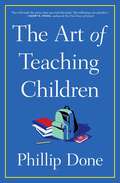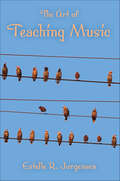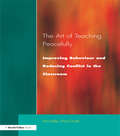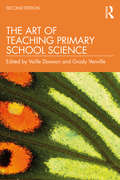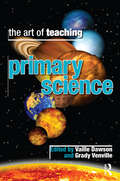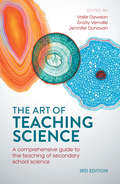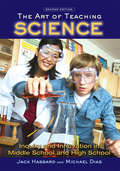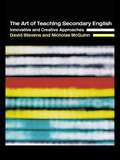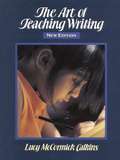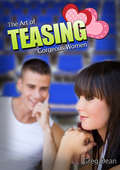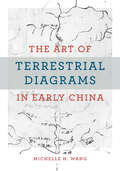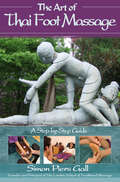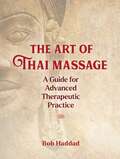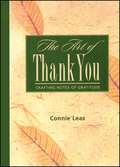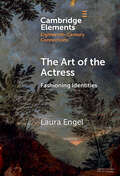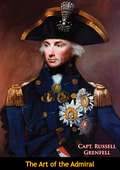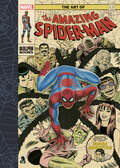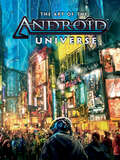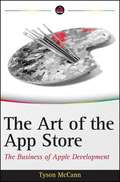- Table View
- List View
The Art of Taxidermy
by John Rowley"The Art of Taxidermy" by John Rowley is an authoritative and comprehensive guide to the fascinating world of taxidermy. Rowley, a master taxidermist with years of experience, offers readers an in-depth look into the techniques, tools, and artistry involved in preserving and mounting animals. This seminal work serves as both a practical manual for aspiring taxidermists and an insightful exploration of the history and evolution of this unique craft.Rowley begins by tracing the origins and development of taxidermy, providing a historical context that highlights its significance in scientific research, education, and art. He delves into the various methods used throughout the centuries, showcasing how taxidermy has evolved into a sophisticated and respected discipline.The heart of "The Art of Taxidermy" lies in its detailed instructions and step-by-step guides. Rowley covers a wide range of topics, from the basics of skinning and preserving specimens to the more advanced techniques of shaping, mounting, and creating lifelike displays. Each chapter is filled with practical tips, illustrative diagrams, and clear explanations, making the complex processes accessible to both beginners and experienced practitioners.In addition to the technical aspects, Rowley emphasizes the artistic side of taxidermy, discussing the importance of anatomical accuracy, natural poses, and realistic finishing touches. He provides insights into the creative process, encouraging readers to develop their own style and approach to this intricate art form."The Art of Taxidermy" also includes a section on ethical considerations and best practices, underscoring the importance of sustainability and respect for wildlife. Rowley's passion for the craft and commitment to ethical standards shine through in every chapter, making this book a valuable resource for anyone interested in the responsible practice of taxidermy.Whether you are a novice taxidermist looking to learn the basics or an experienced artist seeking to refine your skills, John Rowley's "The Art of Taxidermy" offers a wealth of knowledge and inspiration. It stands as a timeless reference in the field, celebrating the blend of science, skill, and artistry that defines the craft of taxidermy.
The Art of Teaching: Experiences of Schools
by Cedric CullingfordA central dilemma for teachers is finding ways to deal with the multiple perspectives and demands of pupils, parents, school management, and external forces. The Art of Teaching explores the tension between teaching and learning that all teachers face. Presenting a series of insights into the art of teaching from the perspectives of those individuals most closely involved in the schooling process, the book explores pupil voice in schools, and experiences of teaching and learning from the pupil perspective. Providing an opportunity for self reflection, the book also examines teachers’ relationships with parents, external agencies and their attitudes towards pupils. Subjects covered include: What pupils think of teachers Teacher’s views of themselves and self reflection School hierarchies and the ethos of inspection Using pupil insights to inform learning strategies Essential reading for all teachers and students, this book offers a unique insight into school relationships and structures, giving readers an awareness of what is like to be a teacher. Professor Cedric Cullingford’s many books include "The Causes of Exclusion" (Taylor and Francis) and "How Pupils Cope with School" (Cambridge Scholar’s Press).
The Art of Teaching
by Gilbert HighetThe noted classicist presents his educational methodology, within the context of history, from the Sophists to modern teaching.
The Art of Teaching: Shortcuts for Outstanding Teachers
by The Times MiscreantWith this outrageous catalogue of teaching aids, the times educational miscreant shares his unique approach to many of teaching's most taxing problems. Whether it's marking coursework by weight with Coursework Scales, or planning lessons with the Page-Choosing Money Box, The Art of Teaching is a must for the conscientious teaching professional.
The Art of Teaching: Shortcuts for Outstanding Teachers
by The Times MiscreantWith this outrageous catalogue of teaching aids, the times educational miscreant shares his unique approach to many of teaching's most taxing problems. Whether it's marking coursework by weight with Coursework Scales, or planning lessons with the Page-Choosing Money Box, The Art of Teaching is a must for the conscientious teaching professional.
The Art of Teaching Children: All I Learned from a Lifetime in the Classroom
by Phillip DoneAn essential guide for teachers and parents that&’s destined to become a classic, The Art of Teaching Children is one of those rare and masterful books that not only defines a craft but offers a magical reading experience.After more than thirty years in the classroom, award-winning teacher Phil Done decided that it was time to retire. His days of teaching schoolchildren may have come to an end, but a teacher&’s job is never truly done, and he set out to write the greatest lesson of his career: a book for educators and parents that would pass along everything he learned about working with kids. The result is this delightful and insightful teaching bible, The Art of Teaching Children. From the first-day-of-school jitters to the last day&’s tears, Done writes about the teacher&’s craft, classrooms and curriculums, the challenges of the profession, and the reason all teachers do it—the children. Drawing upon decades of experience, Done shares sound guidance, time-tested tips, and sage advice: Real learning is messy, not linear. Greeting kids in the morning as they enter the classroom is one of the most important parts of the school day. If a student is having trouble, look at what you can do differently before pointing the finger at the child. Ask yourself: Would I want to be a student in my class? When children watch you, they are learning how to be people, and one of the most important things we can do for our students is to model the kind of people we would like them to be. Done tackles topics you won&’t find in any other teaching book, including Back to School Night nerves, teacher pride, lessons that bomb, the Sunday Blues, Pinterest envy, teacher guilt, and the things they never warn you about in &“teacher school&” but should, like how to survive lunch supervision, recess duty, and field trips. Done also addresses some of the most important issues schools face today: bullying, excessive screen time, unsupportive administrators, the system&’s obsession with testing, teacher burnout, and the ever-increasing demands of meeting the diverse learning needs of students. With great wit and wisdom, first-rate storytelling, and boundless compassion, The Art of Teaching Children is the definitive guide to educating today&’s young learners and the perfect resource for teachers and parents everywhere.
The Art of Teaching Music (Counterpoints: Music and Education)
by Estelle R. JorgensenThe Art of Teaching Music takes up important aspects of the art of music teaching ranging from organization to serving as conductor to dealing with the disconnect between the ideal of university teaching and the reality in the classroom. Writing for both established teachers and instructors on the rise, Estelle R. Jorgensen opens a conversation about the life and work of the music teacher. The author regards music teaching as interrelated with the rest of lived life, and her themes encompass pedagogical skills as well as matters of character, disposition, value, personality, and musicality. She reflects on musicianship and practical aspects of teaching while drawing on a broad base of theory, research, and personal experience. Although grounded in the practical realities of music teaching, Jorgensen urges music teachers to think and act artfully, imaginatively, hopefully, and courageously toward creating a better world.
Art of Teaching Peacefully: Improving Behavior and Reducing Conflict in the Classroom
by Michelle MacGrathFirst Published in 1998. Routledge is an imprint of Taylor & Francis, an informa company.
The Art of Teaching Primary School Science
by Grady Venville Vaille DawsonThe long-awaited second edition of The Art of Teaching Primary School Science has evolved to meet the demands of schools in our rapidly changing society. Recognising that children have an innate curiosity about the natural world means that teaching primary school science is both rewarding and critical to their futures. The focus of the chapters reflects the deep expertise in curriculum and pedagogy of the chapter authors. Included are chapters on the nature (wonder) of science and how children learn as well as the nuts and bolts of teaching: planning, pedagogy and assessment. In addressing the teacher education AITSL professional standards for teaching, there are chapters on digital pedagogies, differentiation and advanced pedagogies such as problem-based learning. Finally, there is a section on STEM education that explains how an integrated approach can be planned, taught and assessed. This book is both accessible to all preservice and practising teachers and up-to-date in providing the right mix of theoretical and practical knowledge expected of this generation of primary school teachers. Teacher educators worldwide will find this an essential resource.
Art of Teaching Primary Science
by Vaille Dawson Grady VenvilleChildren have an innate curiosity about the natural world that makes teaching science a rewarding experience.However teaching science is an art that requires a unique combination of knowledge and skills to make the most of students' interest and foster their understanding. With contributions from leading educators, The Art of Teaching Primary Science addresses the fundamental issues in teaching science in primary and early childhood years.Reflecting current research in science education, The Art of Teaching Primary Science covers the following areas:* the theoretical underpinnings of science education and curriculum;* effective science teaching practice planning, teaching strategies, investigations, resources and assessment;* key issues including scientific literacy, integrating science and technology, and activities outside the classroom.The Art of Teaching Primary Science is invaluable for student teachers as a guide to the fundamentals of science education, and as a resource for experienced teachers to review and enhance their professional skills.'An excellent reference for those teachers of the primary years seeking the best ways to engage their students in good science and scientific investigation, and keen to link these with other learning areas.'Peter Turnbull, President, Australian Science Teachers Association
The Art of Teaching Science: A comprehensive guide to the teaching of secondary school science
by Vaille Dawson Grady Venville Jennifer DonovanThe Art of Teaching Science has proven itself to be one of the most popular introductory texts for Australian pre-service and in-service teachers, providing guidance on engaging students and helping develop scientifically literate citizens. Beginning with an examination of the nature of science, constructivist and socio-cultural views of teaching and learning and contemporary science curricula in Australian schools, the expert authors go on to explore effective teaching and learning strategies, approaches to assessment and provide advice on the use of ICT in the classroom. Fully revised and updated, this edition also reflects the introduction of the AITSL professional standards for teachers and integrates them throughout the text. New chapters explore: •a range of teaching strategies including explicit instruction, active learning and problem-based learning; •the effective integration of STEM in schools; •approaches to differentiation in science education; and•contemporary uses of ICT to improve student learning. Those new to this text will find it is deliberately written in user-friendly language. Each chapter stands alone, but collectively they form a coherent picture of the art (in the sense of creative craft) and science (as in possessing the knowledge, understanding and skills) required to effectively teach secondary school science. 'Helping each new generation of school science teachers as they begin their careers is crucial to education. This is the updated, third edition of this valuable textbook. It contains a wonderful range of inspirational chapters. All science teachers, not only those at the start of the profession, would benefit from it, in Australia and beyond.'Michael J. Reiss, Professor of Science Education, University College, London
The Art of Teaching Science: Inquiry and Innovation in Middle School and High School
by Jack Hassard Michael DiasThe Art of Teaching Science emphasizes a humanistic, experiential, and constructivist approach to teaching and learning, and integrates a wide variety of pedagogical tools. Becoming a science teacher is a creative process, and this innovative textbook encourages students to construct ideas about science teaching through their interactions with peers, mentors, and instructors, and through hands-on, minds-on activities designed to foster a collaborative, thoughtful learning environment. This second edition retains key features such as inquiry-based activities and case studies throughout, while simultaneously adding new material on the impact of standardized testing on inquiry-based science, and explicit links to science teaching standards. Also included are expanded resources like a comprehensive website, a streamlined format and updated content, making the experiential tools in the book even more useful for both pre- and in-service science teachers. Special Features: Each chapter is organized into two sections: one that focuses on content and theme; and one that contains a variety of strategies for extending chapter concepts outside the classroom Case studies open each chapter to highlight real-world scenarios and to connect theory to teaching practice Contains 33 Inquiry Activities that provide opportunities to explore the dimensions of science teaching and increase professional expertise Problems and Extensions, On the Web Resources and Readings guide students to further critical investigation of important concepts and topics. An extensive companion website includes even more student and instructor resources, such as interviews with practicing science teachers, articles from the literature, chapter PowerPoint slides, syllabus helpers, additional case studies, activities, and more. Visit http://www.routledge.com/textbooks/9780415965286 to access this additional material.
The Art of Teaching Secondary English: Innovative and Creative Approaches
by Nicholas McGuinn David StevensAt a time when school-based English is in danger of becoming reductive and mechanistic, the authors of this book reconsider the fundamental philosophy of English teaching, evaluate current practice and offer a practical framework for new approaches to teaching this important subject. The authors draw on recent initiatives in the area, including the National Literacy Strategy, but also offer wider perspectives on the formation and development of both English and English teaching in a modern society. This will help teachers develop both a personal philosophy and a critical perspective on the various traditions of English teaching as well as on current initiatives and reforms. The book includes: provocative quotations from writers, artists and thinkers responses to key figures in modern educational thought exploration and development of the principle areas, illuminating key issues, tensions and opportunities practical possibilities for classroom practice. The Art of Teaching Secondary English is a practical and accessible resource for everyone involved in English teaching.
The Art of Teaching Writing, New Edition
by Lucy McCormick CalkinsWhen Lucy Calkins wrote the first edition of The Art of Teaching Writing, the writing workshop was a fledgling idea, piloted by a few brave innovators. Now, as she brings us this new edition, the writing workshop is at the foundation of language arts education throughout the English-speaking world. This new edition, then, could easily have been a restatement, in grander, more confident tones, of the original classic. Instead, it is an almost entirely new book. <P><P>Clearly, during the time in which Calkins's original ideas have spread like wildfire, her focus has not been on articulating and defending those ideas, but on developing and rethinking them. Respecting and responding to the questions which have arisen as thousands of teachers establish writing workshops in their classrooms, and drawing upon the latest knowledge in the field and her own intimate understanding of classroom life, Calkins has re-thought every line and every facet of her original text. <P><P>In this new edition, Lucy has major new chapters on assessment, thematic studies, writing throughout the day, reading/writing relationships, publication, curriculum development, nonfiction writing and home/school connections. More than this, she has deepened her understanding of the writing process itself: <P><P>"When I wrote the first edition, I saw writing as a process of choosing a topic, turning the topic into the best possible draft, sharing the draft with friends, then revising it. But I've come to think that it's very important that writing is a process not only of recording, but also of developing a story or an idea. Now, in this new edition, I describe writing episodes that do not begin with a topic and a draft but instead with something noticed or something wondered about. When writing begins with something that has not yet found its significance, it is more apt to become a process of growing meaning."
The Art of Teasing Gorgeous Women
by Greg DeanFinally, a dating advice book that teaches you how to hold your ground when you don't know how to handle the confidence and tests of gorgeous women.Make a gorgeous woman laugh through flirting and teasing and you can capture her heart. This book full of dating advice for men will show you how.Gorgeous women have heard it all before:"You are so beautiful.""You have the most beautiful eyes.""Wow, you have a really sexy body."The compliments bore them when they come from men who are way too easy to obtain.This easy-to-follow guide will teach you:- Sexual confidence- To have a complete lack of neediness- To convey you are popular, fun and very funny, even if you're not- How to handle virtually any conversation with gorgeous women so you appear strong, cocky and awesome to be with.Renowned date coach, Greg Dean gives you the vital blueprint you need to create stunning attraction between you and the gorgeous woman you are falling for.Men love compliments. Women love to be teased and challenged. So if you want to attract beautiful women, you must take another tact.Too many guys play too nice or go way too far. This book teaches you that perfect balance. It will teach you to grow your own style but provides a complete back up system when you need to challenge her on the spot in a fun, friendly, confident way.This guide is an absolute must for any guy who gets nervous around gorgeous women, conveys way too much interest and constantly gets friend zoned, or worse, ignored.If you want the best possible chance to get the gorgeous girl and you don't know how to really handle yourself, this instruction book will show you what to say to her and give you the best possible chance at success.Confident, gorgeous women love to be teased and challenged in a loving, fun way. This is the art of teasing gorgeous women.
The Art of Terrestrial Diagrams in Early China
by Michelle H. WangA study of early Chinese maps using interdisciplinary methods. This is the first English-language monograph on the early history of maps in China, centering on those found in three tombs that date from the fourth to the second century BCE and constitute the entire known corpus of early Chinese maps (ditu). More than a millennium separates them from the next available map in the early twelfth century CE. Unlike extant studies that draw heavily from the history of cartography, this book offers an alternative perspective by mobilizing methods from art history, archaeology, material culture, religion, and philosophy. It examines the diversity of forms and functions in early Chinese ditu to argue that these pictures did not simply represent natural topography and built environments, but rather made and remade worlds for the living and the dead. Wang explores the multifaceted and multifunctional diagrammatic tradition of rendering space in early China.
The Art of Thai Foot Massage
by Simon Piers GallBoth professional practitioners and casual massage enthusiasts will learn to raise their practice to an art with this step-by-step guide to foot massage as traditionally taught in Thailand. The practical sections of the book clearly cover the different parts of the massage process, and color photos and graphics provide clear explanations to help learners utilize the techniques with confidence. The book also covers the history and theory behind Thai foot massage, including discussions about the reflex points on the feet and the concept of Sen (energy) lines that flow throughout the body, to help explain how this ancient healing art works. Though Thai foot massage is not a curative in itself, the featured techniques can promote general health and well-being.
The Art of Thai Massage: A Guide for Advanced Therapeutic Practice
by Bob Haddad• Presents guidelines for effortless and effective practice, including body mechanics, breathing patterns, flowing movements, incremental pressure, and exercises to improve sensing and to strengthen intuition as you work • Offers ways to refine and improve classic techniques that are often performed incorrectly, explains broad healing concepts behind individual techniques, and discusses the awareness and sensitivity with which they should be performed • Answers common questions, clarifies misunderstandings, and presents ways to work with focused intention on a deeper level, and with more grace, ease, and efficiency UNLIKE OTHER BOOKS ABOUT THAI MASSAGE, this guide offers a deep and insightful view of important and often neglected aspects of this work. Many of these concepts and techniques also apply to table massage, physical therapy, yoga, and other healing arts. This book guides the reader through the conceptual, spiritual, and practical approaches behind effective bodywork. An entire section is dedicated to awareness of breath for massage, movement, and everyday activities. Assessment guidelines help the therapist to work with others based on physical appearance, preexisting conditions, and elemental predisposition. Exercises are presented to sharpen sensing abilities and intuition, and to find, coax, and release blockages in the body. Twelve important Thai massage techniques that are often taught and performed incorrectly are described in great detail. Other chapters offer ways to create customized sequences of practice and to move from one technique to another with ease and grace. Finally, the chapter on medicinal herbs discusses the preparation, use, and benefits of herbal compresses, poultices, balms, oils, and baths, and it offers easy recipes for all of these therapies. This manual contains information that has never been previously available in print. Full of exercises and insights to help therapists hone their bodywork skills, it reveals key principles that give way to effective treatment and explores traditional Thai massage with a special focus on intention, awareness, sensitivity, and spirituality.
The Art of Thank You: Crafting Notes of Gratitude
by Connie LeasLearn the secrets of the "whys," "whens," and "how-tos" of thank-you note writing. The Art of Thank You will motivate you--or perhaps someone you know who could use a little encouragement--to pick up a pen and take the time to express gratitude. Interspersing straightforward guidelines with funny, inspiring anecdotes and examples by such luminaries as Abraham Lincoln and Ernest Hemingway, the author's practical tips for newlyweds, business people, and children make this handy little book an indispensable resource.
The Art of Thank You
by Connie LeasPart inspirational, part how-to, The Art of Thank You shows how to write well-crafted notes of gratitude for all occasions. Readers learn when, and when not, to send a card, whether an e-mail is ever appropriate, and how to get children to write thank-you notes. Learn the secrets of the whys whens, and how-tos of thank-you-note writing. The Art of Thank You will motivate you or perhaps someone you know who could use a little encouragement to pick up a pen and take the time to express gratitude. Interspersing straightforward guidelines with funny, inspiring anecdotes and examples by such luminaries as Abraham Lincoln and Ernest Hemingway, the author's practical tips make this handy little book an indispensable resource.
The Art of the Actress: Fashioning Identities (Elements in Eighteenth-Century Connections)
by Laura EngelThis Element looks at the art of the actress in the eighteenth century. It considers how visual materials across genres, such as prints, portraits, sculpture, costumes, and accessories, contribute to the understanding of the nuances of female celebrity, fame, notoriety, and scandal. The 'art' of the actress refers to the actress represented in visual art, as well as to the actress's labor and skill in making art ephemerally through performance and tangibly through objects. Moving away from the concept of the 'actress as muse,' a relationship that privileges the role of the male artist over the inspirational subject, the author focuses instead on the varied significance of representations, reproductions, and re-animations of actresses, female artists, and theatrical women across media. Via case studies, the Element explores how the archive charts both a familiar and at times unknown narrative about female performers of the past.
The Art of the Admiral
by Capt. Russell GrenfellThis is a book about naval strategy. It is therefore of a semi-technical nature, which may seem at first sight to limit its appeal to the technical reader. I make no apology, however, for addressing myself to the layman as well as to the professional officer. It used to be thought at one time that war was the affair of the fighting forces only and that fighting men were the only ones who were competent to express an opinion on matters of strategy. The late war showed the fallacy of those ideas. It showed that modern war is an affair of whole nations and not merely of armies and navies. It also made it clear that the final responsibility for strategy lay with the civilian government. Indeed, as the war progressed, the War Cabinet found itself taking a more and more searching interest in the determination of strategy. Under these conditions, where the civilian representatives of the public play an active part in the framing of strategy, it is most desirable that the public itself should have a working knowledge of strategical principles. Though the Government may often be forced by the exigencies of the case to come to vital decisions concerning the conduct of the war without previously taking the public into its confidence, there can be no doubt that it will be greatly strengthened in making those decisions if it can feel that it has behind it an instructed public opinion on strategical matters; a public opinion which is capable of forming a just and reliable estimate of the soundness or otherwise of the strategy adopted, as it is seen to develop. In a world, therefore, where warfare is not only a possibility but seems at the moment a matter of increasing probability, it appears to be the duty of every citizen to acquaint himself with the main outlines of strategy.
The Art of the Amazing Spider-Man
by Stan LeeThis oversized hardcover gallery collects iconic original art from The Amazing Spider-Man #39–122, is accompanied by essays from comics editor John Lind, and featured an introduction by Brian Michael Bendis.The Amazing Spider-Man has remained the flagship title for the classic Marvel Comics character Spider-Man for over six decades. Stan Lee and Steve Ditko co-created the character in 1962, and it quickly became a sensation. Then, with The Amazing Spider-Man #39, John Romita Sr. replaced Ditko as the main artist and began an epic run.This oversized Bullpen Books edition focuses on Romita's work on ASM from 1966 to 1973, a run that would dramatically reshape the world of Spider-Man and his alter ego, Peter Parker. With his unmatched skill in dynamic layouts and composition, Romita, working alongside Stan Lee on some of Spider-Man's most enduring storylines and with contributions from a supporting cast of legendary Marvel Bullpen contributor—including Gil Kane, John Buscema, Jim Mooney, and Mike Esposito—would help lead Spider-Man to even greater heights in pop culture.This evolution told through essays, covers, and original artwork-including seven full ASM stories, reproduced from the original art in the Marvel Comics archives-allows readers to engage with and appreciate the legacy of some of The Amazing Spider-Man's most important contributors.Bullpen Books is a new series of art books that honors the work of legendary Marvel Comics characters and creators, starting with The Art of the Amazing Spider-Man in Fall 2024! This oversized hardcover features essays on work by John Romita Sr. and Gil Kane, covers, and original art scans from the Marvel archives.
The Art of the Android Universe
by AsmodeeAn eye-popping oversized hardcover showcasing the design and art from the hit table top games set within the Android Universe! From the megapolis of New Angeles to the lunar Heinlein colony to the dangerous Martian frontier and beyond, the universe of Android is a grand futuristic setting like no other. This volume explores the fantastic designs of each of the games&’ characters, accompanied by intricate examinations of the technological marvels of the worlds and the surrealist landscapes of cyberspace! Whether you&’re a scrappy runner, a calculating sysop, a down-on-your-luck detective, or an artificial android, this gorgeous art book is a must own item for any fan of of near-future science fiction or iconic tabletop games.
The Art of the App Store
by Tyson MccannA unique behind-the-scenes look at what makes an application succeed in the App Store With this invaluable book, Tyson McCann offers a non-technical look at all aspects of the iPhone application development landscape and gets to the core of what makes a popular-and profitable-application. From knowing your customer to to launching a successful app, and everything in between, this must-have guide navigates such topics as developing a concept, analyzing the competition, considerations before the launch, marketing, building a community, and maintaining market share… to name a few. Coverage includes: • Setting Your Goals, Costs, and Expectations • Researching the App Store Market • Knowing Your Customer • Plotting the Stages of Development • Guidelines and Expectations for Developing Your App • Creating Free and Freemium Apps • Creating Paid and Premium Apps • Adopting Apple's Approach • Riding the Social Networking Wave • Feedback, Maintaining, and Scaling Open the vault to App Store success with this indispensable guide!
